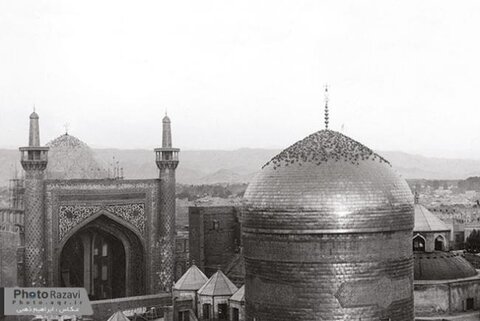Hawzah News Agency (Mashhad - Iran) - The collection of documents with Astan Quds Razavi’s administrative organization in the Safavid period is one of the oldest in kind in the country. These documents contain interesting information on administrative, social, economic, agricultural, endowment and religious issues in the geographical area of Iran and Afghanistan especially in Great Khorasan, now comprising the three provinces of Razavi, North and South Khorasan.
Reza Naqdi, a researcher at Razavi Culture and Conduct Department of the Islamic Research Foundation, recently conducted a study entitled “History and Organization of Astan Quds Razavi in the Qajar Era”, which is full of appealing and eye-catching points. Astan Quds Razavi is the body in charge of Imam Reza (AS) holy shrine.
Naqdi, in his work, has spoken about the AQR history and organization which began after the martyrdom of Imam Reza (AS) and was recognized during the reign of Shah Tahmasb of Safavid dynasty. From the very beginning, servants were hired to take care of the holy shrine affairs, when Hussein Ibn Ali Ibn Sa’ed Barbari, one of the maternal relatives of Imam Reza (AS), served as the first custodian of the holy shrine.
The tomb of Abbasid caliph Harun Al-Rasheed was next to the shrine. As a result, there was always competition between the Shiites and the followers of Harun al-Rasheed, yet gradually many Shia Muslims gathered around the shrine of Imam Reza (AS) and settled around it.
The author points out that in the fourth century AH, and during the Samanid period, the shrine was expanded in size, when Sadat Mousavi, a descendant of Hamzah ibn Musa al-Kadhim (AS), took charge of the shrine. Direct descendants of the Prophet (pbuh) in Tus region held the position until the end of the Timurid dynasty. The time marks a very important era in managing and preserving the shrine and its objects, and also its expansion.
During the Seljuk and then Khwarezmshahi periods, special attention was paid to the shrine. The proof for the claim lies in exquisite Sanjari tiles worked in the structure of the holy shrine. However, there are, unfortunately, few documents about the organization of the shrine from that time.
Naqdi says that after the fall of the Abbasids, the holy shrine received even more attention. The organization expanded further during the Timurid period and in the time of Shahrokh Teymouri, Mashhad became the third largest city in Khorasan after Samarkand and Herat. Due to the increase in the number of pilgrims, the organization of the shrine and the buildings grew in size, and places such as Goharshad Mosque, Dodarb and Prizad and Shahrokhi schools, as well as the Atiq courtyard, etc., were constructed with the special care of Amir Alishir Navayi, the minister and advisor to Sultan Hussein Bayqara.
With the recognition of Shiism by Shah Ismail of Safavid dynasty, the shrine was introduced as a Shia center. Many of the organizations in the shrine date back to the Safavid period, during which the shrine was recognized as one of the holiest places in the Islamic world, and the most endowed charity center, around which many schools, mosques and welfare centers were built.
Upon an order by Shah Tahmasb I, an extensive administrative and financial organization was established for the shrine, which was headed by a custodian after the Shah, who supervised financial issues and endowments. Next, mention should be made of finance officials (Mostofi and Nazer) and welfare centers including Dar al-Shafa, guesthouse, Sharbatkhaneh, Saqakhaneh, lighting, Assarkhaneh, library and Karkaraqkhaneh. Organization of servants, footmen and the concierges, who served in different shifts, establishing more financial and administrative organizations were among the other developments since then.

